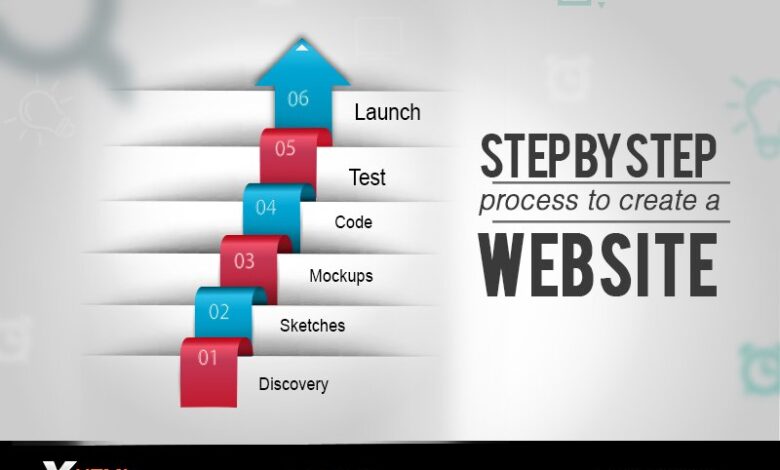
Implementing Best Practices for Web Design with Iterative Methodologies
Implementing best practices for web design with iterative methodologies is a game-changer in today’s dynamic digital landscape. This approach, which emphasizes continuous improvement and user feedback, offers a powerful alternative to traditional waterfall methods. By embracing iterative methodologies, web designers can create truly user-centric experiences, ensuring that websites meet the evolving needs of their target audiences.
This blog post will delve into the key principles, best practices, and practical strategies for integrating iterative methods into your web design workflow, ultimately helping you build websites that are both visually appealing and highly effective.
The core of iterative methodologies lies in breaking down the design process into smaller, manageable cycles. Each cycle involves planning, design, development, testing, and refinement. User feedback is continuously collected and incorporated throughout the process, leading to a more user-centered and adaptable approach.
This contrasts with traditional waterfall methods, where design and development occur in a linear fashion, with limited opportunities for feedback and adjustments. Popular iterative models like Agile, Scrum, and Lean UX provide frameworks for structuring these cycles, ensuring efficient collaboration and continuous improvement.
Defining Best Practices for Web Design: Implementing Best Practices For Web Design With Iterative Methodologies
In the ever-evolving landscape of web design, adhering to best practices is crucial for creating websites that are not only visually appealing but also user-friendly, accessible, and effective. This section delves into the key principles that guide best practices for web design, encompassing UI design, UX design, and responsive web design.
User Interface (UI) Design Best Practices
Effective UI design prioritizes usability, accessibility, and visual appeal to create a seamless and enjoyable user experience. Here are some key best practices:
- Usability: A well-designed UI should be intuitive and easy to navigate. Users should be able to quickly find what they need and complete tasks without frustration. This can be achieved through clear and consistent labeling, logical information hierarchy, and intuitive navigation menus.
- Accessibility: Ensuring accessibility means designing websites that are usable by everyone, regardless of their abilities. This includes incorporating features such as alternative text for images, keyboard navigation, and sufficient color contrast.
- Visual Appeal: A visually appealing UI enhances user engagement and brand perception. This can be achieved through the use of aesthetically pleasing typography, color schemes, and imagery. It’s important to maintain a balance between visual appeal and usability.
User Experience (UX) Design Best Practices
UX design focuses on creating a positive and memorable experience for users. Key best practices include:
- User Research: Understanding user needs and behaviors is essential for designing effective user experiences. Conducting user research, such as surveys, interviews, and usability testing, helps identify user pain points and preferences.
- Information Architecture: A well-structured information architecture (IA) ensures that website content is organized logically and intuitively. Users should be able to easily find the information they need without getting lost or confused.
- Interaction Design: Interaction design focuses on the interaction between users and the website. It encompasses elements such as navigation, forms, and feedback mechanisms. Designing intuitive and responsive interactions is crucial for a positive user experience.
Responsive Web Design Best Practices
Responsive web design ensures that websites adapt seamlessly to different screen sizes and devices. Key best practices include:
- Cross-Device Compatibility: Websites should be designed to function flawlessly across various devices, including desktops, laptops, tablets, and smartphones. This requires using flexible layouts, responsive images, and appropriate font sizes.
- Mobile-First Approach: The mobile-first approach prioritizes designing for mobile devices first and then scaling up for larger screens. This ensures that the website is optimized for smaller screens and provides a good foundation for larger devices.
- Use of Media Queries: Media queries allow websites to apply different styles based on the device’s screen size, orientation, and other factors. This enables websites to adapt dynamically to different screen sizes.
Integrating Iterative Methods into Web Design Workflow
Iterative design is a crucial approach for achieving successful web design outcomes. This method emphasizes continuous improvement through a series of cycles, involving user feedback and testing at every stage. By incorporating iterative methods into the web design workflow, designers can create user-centered, highly effective websites.
Implementing best practices for web design with iterative methodologies is crucial for creating a successful online presence. This approach allows for continuous improvement and adaptation, ensuring that your website meets the ever-evolving needs of your audience. It’s inspiring to see the impact of these efforts, as evidenced by the fact that Shopify merchants, many of whom have embraced iterative design principles, have created nearly 5 million jobs according to a recent report.
This success underscores the importance of prioritizing user experience and data-driven decision-making throughout the web design process.
Phases of an Iterative Web Design Process
Iterative design typically involves a series of phases, each focusing on a specific aspect of the design process. These phases are interconnected and build upon each other, allowing for continuous refinement and improvement.
Just like implementing best practices for web design with iterative methodologies involves constant feedback and refinement, so too does navigating the complexities of our political landscape. The question of whether inflation worries will push Americans toward authoritarianism to economic detriment, as explored in this insightful article opinion will inflation worries push americans toward authoritarianism to economic detriment , highlights the importance of open dialogue and critical thinking.
Similarly, in web design, embracing an iterative approach allows us to adapt and optimize our creations based on user feedback and evolving trends, ensuring a positive and impactful user experience.
- Planning and Research:This phase involves defining the project scope, identifying target users, and conducting thorough research to understand user needs, behaviors, and goals.
- Initial Design:Based on the research findings, a preliminary design concept is created, outlining the basic structure, layout, and visual elements of the website.
- Testing and Feedback:This phase involves testing the initial design with target users to gather feedback on usability, aesthetics, and overall effectiveness.
- Iteration and Refinement:Based on the feedback received, the design is iteratively refined, incorporating changes and improvements to address user needs and concerns.
- Development and Implementation:Once the design is finalized, the website is developed and implemented, incorporating the iterative improvements made throughout the process.
- Launch and Monitoring:After launch, the website is continuously monitored for user engagement, performance, and effectiveness. This data is used to identify areas for further improvement and inform future iterations.
Step-by-Step Guide for Implementing Iterative Methods
Implementing iterative methods in a web design project involves a structured approach, ensuring that user feedback and testing are integrated at every stage.
- Define Project Scope and Objectives:Clearly define the goals and objectives of the website, including target audience, key functionalities, and desired outcomes.
- Conduct User Research:Gather information about target users through user interviews, surveys, and usability testing. This research helps understand user needs, behaviors, and preferences.
- Create Low-Fidelity Prototypes:Develop initial design concepts using low-fidelity prototypes, such as wireframes or sketches. This allows for rapid iteration and feedback on the basic structure and layout.
- Test with Users:Conduct usability testing with target users to gather feedback on the low-fidelity prototypes. This helps identify usability issues, areas for improvement, and user preferences.
- Refine Design Based on Feedback:Incorporate user feedback into the design, making necessary changes and improvements to address usability issues and enhance the user experience.
- Create High-Fidelity Prototypes:Develop high-fidelity prototypes, which are more detailed and visually appealing representations of the final design.
- Test High-Fidelity Prototypes:Conduct further usability testing with target users to evaluate the high-fidelity prototypes and gather feedback on visual design, navigation, and overall user experience.
- Develop and Implement Website:Based on the final design, develop and implement the website, ensuring that it aligns with user feedback and best practices.
- Monitor and Analyze User Behavior:After launch, monitor user behavior on the website, tracking key metrics such as website traffic, user engagement, and conversion rates. This data provides insights for future iterations and improvements.
- Iterate and Improve:Continuously analyze user data and feedback to identify areas for improvement. Implement changes and updates based on insights gained, ensuring the website remains user-centered and effective.
Workflow Diagram Illustrating User Feedback Integration
A workflow diagram illustrating the integration of user feedback and testing at various stages can be helpful in visualizing the iterative process.
The diagram should show the cyclical nature of the process, with user feedback driving design iterations and improvements.
Tools and Techniques for Iterative Web Design
Iterative web design relies heavily on tools and techniques that facilitate the creation of prototypes, gather user feedback, and analyze data to inform design decisions. These tools and techniques enable designers to quickly test and refine their ideas, ensuring that the final product meets the needs and expectations of users.
Wireframing Tools for Low-Fidelity Prototypes
Wireframing tools are essential for creating low-fidelity prototypes, which are simplified representations of the website’s structure and layout. These prototypes are useful for visualizing the website’s information hierarchy, navigation flow, and overall user experience.
- Balsamiq:Balsamiq is a popular wireframing tool that offers a simple and intuitive interface for creating hand-drawn style wireframes. It provides a wide range of pre-built components and allows users to quickly sketch out website layouts without the need for complex design skills.
- Figma:While Figma is primarily known for its high-fidelity prototyping capabilities, it also offers a robust wireframing feature. It allows users to create wireframes with a clean and modern aesthetic, making them suitable for both low-fidelity and high-fidelity prototypes.
- Adobe XD:Adobe XD is another popular design tool that provides a comprehensive wireframing feature. It allows users to create interactive wireframes with a focus on user experience and functionality.
Prototyping Tools for Interactive Mockups and User Testing
Prototyping tools are used to create interactive mockups that simulate the user experience of a website. These mockups can be used for user testing, gathering feedback on the design, and identifying areas for improvement.
- InVision Studio:InVision Studio is a powerful prototyping tool that allows designers to create interactive prototypes with realistic animations and transitions. It provides a wide range of features for creating high-fidelity prototypes that can be used for user testing and client presentations.
- Marvel:Marvel is a user-friendly prototyping tool that offers a drag-and-drop interface for creating interactive mockups. It allows designers to create prototypes quickly and easily, making it suitable for both individual projects and team collaborations.
- Proto.io:Proto.io is a comprehensive prototyping tool that provides a wide range of features for creating interactive prototypes. It allows designers to create prototypes with advanced interactions, animations, and transitions, making them suitable for complex projects.
A/B Testing and User Feedback Analysis
A/B testing and user feedback analysis are crucial components of iterative web design. A/B testing involves creating two versions of a website element, such as a button or headline, and presenting them to different groups of users to determine which version performs better.
Implementing best practices for web design with iterative methodologies means constantly testing and refining, just like the legal system. The recent ruling by the Supreme Court, which states that Congress can deny federal disability benefits to Puerto Rico residents , highlights the need for continuous evaluation and adaptation.
In the same way, web design requires a constant feedback loop to ensure the best user experience and achieve the desired outcomes.
User feedback analysis involves gathering and analyzing user feedback on the website’s design and functionality, identifying areas for improvement.
- Google Optimize:Google Optimize is a free A/B testing tool that integrates with Google Analytics. It allows users to create and run A/B tests on their websites, track results, and optimize their designs based on data.
- Optimizely:Optimizely is a popular A/B testing platform that provides a comprehensive set of features for running and analyzing A/B tests. It offers advanced targeting options, real-time reporting, and integration with other marketing tools.
- UserTesting:UserTesting is a platform that provides on-demand user feedback. It allows designers to gather feedback from real users on their websites, prototypes, and mobile apps.
Case Studies of Successful Iterative Web Design Projects
Iterative web design methodologies have proven their effectiveness in delivering high-quality, user-centric websites. Real-world examples demonstrate how this approach can lead to improved user experience and achieve business goals. These case studies highlight the importance of user feedback, data analysis, and continuous improvement in web design.
Airbnb’s Iterative Design Process, Implementing best practices for web design with iterative methodologies
Airbnb, a leading platform for short-term rentals, has embraced an iterative design approach to refine its user experience. The company prioritizes user feedback and data analysis to inform its design decisions.Airbnb’s iterative design process involves:
- User research:Conducting user interviews, surveys, and usability testing to understand user needs and pain points.
- Prototyping and testing:Creating prototypes and testing them with users to gather feedback and iterate on designs.
- Data analysis:Tracking website metrics and user behavior to identify areas for improvement.
- Continuous improvement:Making incremental changes based on user feedback and data analysis.
Airbnb’s iterative design approach has led to significant improvements in its platform’s user experience, resulting in increased user engagement and business growth. For example, the company redesigned its search functionality based on user feedback, making it easier for users to find the perfect rental property.
Final Review

By adopting iterative methodologies and integrating best practices, web designers can create websites that not only look stunning but also provide exceptional user experiences. Remember, the key is to embrace continuous improvement, actively seek user feedback, and iterate on your designs throughout the development process.
This iterative approach will empower you to create websites that are truly user-centric, adaptable, and effective in achieving your desired outcomes.



